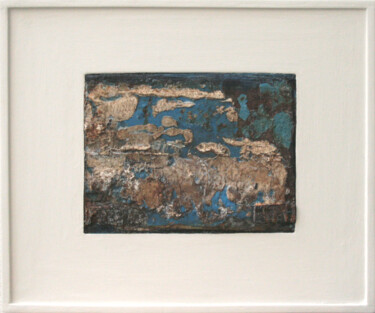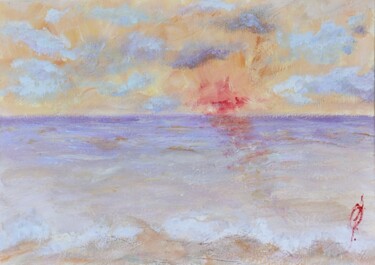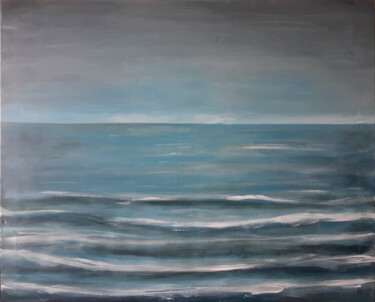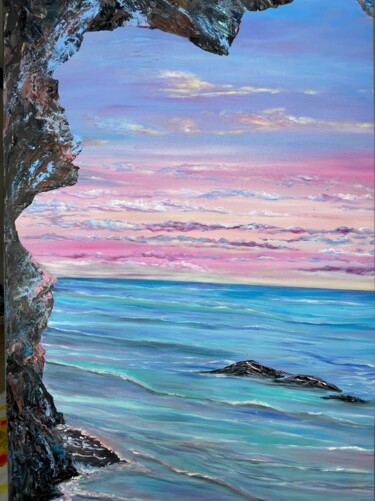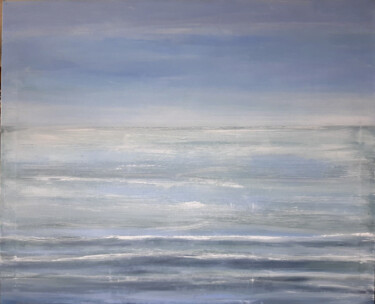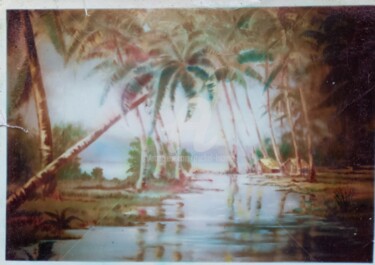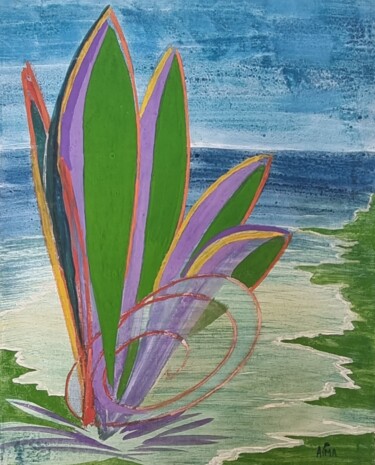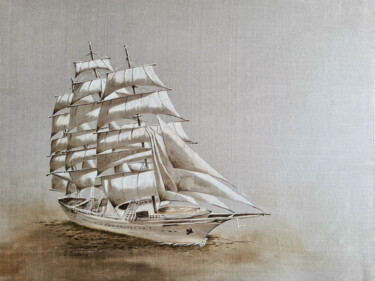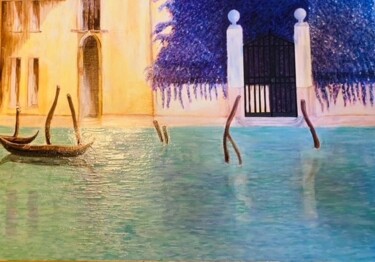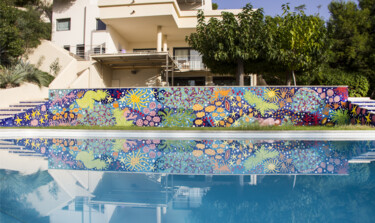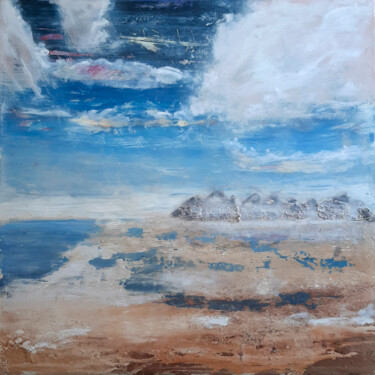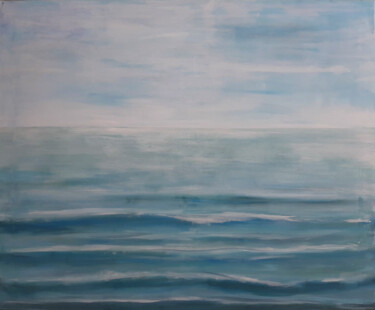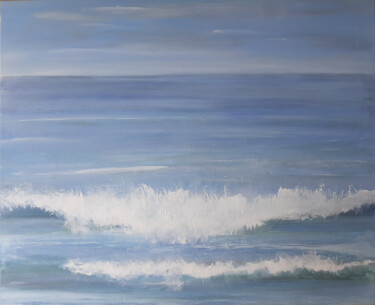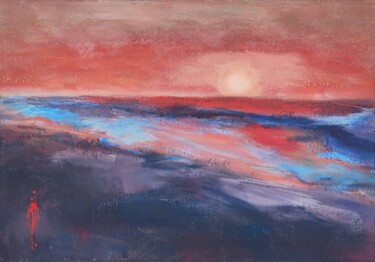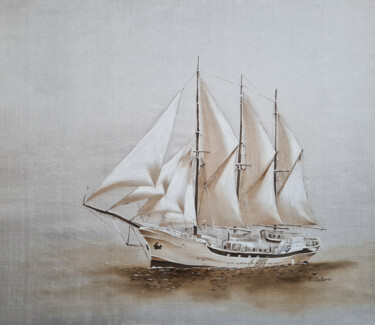61 Original Paintings For Sale:
What is the origin of the Pigments technique?
Painting made using colored powder suspended in a liquid binder to obtain a paint or ink. Pigments, which we often visualize as particles of colors, are, in fact, coloring and soluble chemical substances thus allowing the dyeing of an object, or of a work. Integrated in most artistic materials (inks, pastels, gouache, acrylic, watercolor, tempera, oil, etc.), these pigments can be of natural or synthetic origin. In art, the most used pigments are: indigo blue, lapis lazuli, carmine red, red ocher, saffron yellow, gum-gutte, bladder green, cobalt green, violet of Mars, capuut mortum, Van Dyck brown, ivory black, Judean bitumen, as well as zinc white.
Buying artworks on the theme of "Seascape"
The sea, the ocean ... a world synonymous with both the unknown, beauty, mysteries, dangers, adventures ... No wonder then that the navy alone constitutes a genre of painting that has always inspired generations of painters and which still fascinates us today. The sun setting on the horizon of the sea, the foam of the waves breaking on a rock, the beauty of the fine sandy beaches, the majesty of the boats sailing on the sea… Among the works that have best represented the seascapes through paintings of boats and other seascapes let us quote for example Théodore Géricault with "The Raft of the Medusa", "The Last Voyage" of the Bold by William Turner or "The Great Wave of Kanagawa" of the artist, Hokusai .
Looking for Original paintings for sale?
Explore all styles and all painting techniques: contemporary paintings, street art, abstract art, figurative art, landscapes, portraits, still lifes, nudes, watercolor, oil painting, acrylic painting… Artmajeur is for everyone artistic sensibilities and celebrates beauty by your side for 20 years with more than 2 million contemporary works of art to discover ... or acquire! The world benchmark for contemporary paintings. Discover works by contemporary artists from around the world to decorate your interior with class! Simple art lover or confirmed collector? Find the favorite canvas or painting that will truly enhance your decoration. Artmajeur offers you original works, limited editions and art prints by the best contemporary artists in the world. On Artmajeur, the paintings are selected by enthusiasts and experts in the art market. We select for you the original works of trendy, award-winning and recognized painters as well as new rising values in the field of contemporary art to guide you and help you in your process of buying paintings online.
How do I buy a seascape painting online?
What could be more peaceful than a clear blue sky above an endless ocean?
Imagine your living room wall decorated with a large contemporary seascape painting, framed and hand signed by a modern artist inspired by impressionism.
In addition to that, a vintage painting of a sailboat that will transport you off the beach shores could also match your office room... By depicting marine elements or nautical scenes with boats leaving harbors, artists have represented the sea in its diversity. Whilst the azure ocean beach makes us want to dive, the powerful waves cast you away from the landscape to offer you the best sunset above the sea... When you view seascape paintings, it is not abstract, you can remember the noise of waves, the lightning on the deep blue sea, the wind stroke and the water splashes.
If you need some inspiration, you can type in google "sold seascape painting". You will view the online trends sold by artists around the world.
Seascape has a wide meaning, you can narrow your search by adding "buy seascape painting online" with
- coastal, beach, ocean, sea waves, sea shores
- water splashes, sandstones,
- marine, nautical, boat, sailboat, port, harbor
- sunset beach, blue sea and sky
- abstract, vintage, impressionism seascape...
Modern seascapes paintings can be of any style.
One of the easiest ways to buy a beautiful painting is to buy a seascape painting on an online site. Buying a painting online has many advantages, including the fact that you do not have to go looking for the painting at a gallery. You can buy artworks from an art site online and have the painting delivered directly to your house ready to hang on your wall. This is a great way to buy a painting that will have a lasting impact on your home decor, and you can enjoy the benefits of owning an abstract or figurative seascape painting for years to come.
Many art collectors enjoy buying a sea painting online as they are free to browse for the best choices. Indeed, you can buy a fine art seascape painting online from reputable galleries of artists. Among them, Artmajeur enables any artist to finalize an online sale against the lowest art commission on the internet. There are thousands of seascape paintings on Artmajeur, you will definitely find the best choice on our website.
If you buy a painting online from a gallery, you will also be able to take advantage of any discounts or promotions the gallery may be having. If your budget is too tight, you can make price offers to the artist or order a fine art print of the original artwork. These options are offered by Artmajeur.
Then you have a large offer that can match your wall decor in your room and it is paramount to check the inch dimensions for example.
You will view a selection of artworks showing white and blue background first. You can add more colors in the filters of online art galleries.
Then you need to request the paintings of the size you want, small, medium or large. Some websites allow you to enter the dimensions accurately in inches for example.
Make sure you know what you want, a seascape painting on canvas with acrylic, oil or watercolor paint... How will the painting be shipped stretched on canvas, already framed?
You need to search for the most accurate information about the artwork. If it is an original art piece, it is signed or is it a signed print or just a print?
Another factor you might consider when buying paintings is the type of canvas that the artist used. Artists who create oil paintings and other types of artwork will specify the type of canvas they used. There are canvas types that are better for different types of artwork. For example, a canvas that is made for hanging outdoors is going to be a bit thicker than a canvas that is better for indoor decoration.
Seascapes are definitely a great source of inspiration for artists mostly influenced by impressionism. Artists love to reproduce subjects and objects on the sea. They usually hand paint these elements on canvas with oil, acrylic or watercolor in the marine theme.
Buying a painting online is a piece of cake if you consider the price and shipping fees comparison that is available on the internet. Art lovers can access the largest source of information for artworks. You can type the title of the artwork and artist name you like, then instantly you will find the best choice. In general, public prices are displayed with shipping fees included. You need to check the way of shipping, stretched and framed or rolled in a tube. This is also Artmajeur sales and terms of sold artworks. You have no surprise at all, and you can return the original painting if you change your mind for any reason.
You should also consider what painting you like according to the format (square, rectangle...) and size you require. This is especially important if you buy art online because you do not want to get a canvas with the wrong dimensions. It will be a pity to order an artwork for your home and then finding out that it does not fit your space.
On top of getting the right size canvas for the painting, you should think about how you plan to hang your seascape painting once you buy it. The hanging instructions come with the painting and this can help you buy art online and make sure you have it hung properly on your wall. A painting that does not hang properly will not look right in your home decor, and this is a paramount factor to buy a large sea painting that you really fancy.
Discover contemporary Artworks on Artmajeur
Contemporary art is a vibrant constellation of artistic expressions. This creative universe encompasses a wide array of mediums, from paintings, sculpture, and photography to drawing, printmaking, textile art, and digital art, each medium a star shining with its own distinct radiance. Artists use diverse supports and materials to bring their visions to life, such as canvas, wood, metal, and even innovative digital canvases for the creation of virtual masterpieces.
A contemporary painting, for instance, may weave its story through the masterful strokes of acrylic or oil, while a contemporary sculpture might sing its song in the language of stone, bronze, or found objects. The photographic arts capture and manipulate light to produce striking images, while printmaking employs techniques like lithography and screen-printing to produce multiples of a single, impactful image. Textile art plays with fabrics and fibers, whereas digital art pushes the boundaries of creation with innovative technology.
The allure of contemporary art lies in its boundary-pushing nature, its relentless quest for experimentation and its constant reflection of the evolving human experience. This boundless creativity, coupled with its strong social and personal commentary, makes every piece of contemporary art a unique emblem of its time, a mirror held up to the realities and dreams of our complex world. It whispers to us, moves us, provokes thought, and kindles a deep emotional response, stirring the soul of anyone willing to listen. It is, indeed, the language of emotions and ideas, spoken in the dialect of our era.

©2024 Lee Davis
Origins and history of contemporary art
The story of contemporary art unfolds in the mid-20th century, marked by seismic shifts in artistic expression. Post-World War II, around the 1950s and 1960s, artists began experimenting beyond traditional confines, challenging the norms of what art could be. This revolutionary epoch birthed myriad new movements and artistic forms such as abstract expressionism, pop art, and minimalism. Paintings, once confined by realism, embraced abstraction, as artists used color and form to express emotions and ideas. Notable periods like the advent of pop art in the late 1950s and early 1960s saw artworks mimicking popular culture and mass media, reflecting society’s shifting focus.
The sculptural arts, too, witnessed a metamorphosis. Sculptors started to experiment with new materials and forms, often creating artworks that interacted with the viewer and the surrounding space, fostering a sense of engagement. Drawing, a timeless practice, also evolved, with artists incorporating innovative techniques and concepts to redefine its role in contemporary art.
Photography, a relatively new medium, emerged as a powerful tool in the contemporary art landscape. Born in the 19th century, it truly came into its own in the latter half of the 20th century, blurring the lines between fine art and documentation. Printmaking, a practice dating back to ancient times, saw renewed interest and experimentation with techniques like lithography, etching, and screen printing gaining prominence.
The realm of textile art expanded dramatically, as artists began to appreciate the versatility and tactile quality of fabric and fibers. Artists began using textiles to challenge the boundaries between fine art, craft, and design.
The dawn of digital technology in the late 20th century heralded a new age for contemporary art. Digital art emerged as artists started leveraging new technologies to create immersive, interactive experiences, often blurring the line between the virtual and the physical world.
Through these transformative periods, the essence of contemporary art has remained the same: a dynamic, evolving reflection of the times we live in, continually pushing boundaries and embracing the new, always questioning, always exploring.

©2023 Lee Davis
Evolutions of theses contemporary works in the art market
As we navigate through the 21st century, the dynamic landscape of contemporary art continues to evolve and expand, reflecting our ever-changing world. Contemporary paintings, once primarily confined to two-dimensional canvases, now embrace a multitude of forms and techniques, ranging from mixed media installations to digital creations, each piece a rich a weaving of thoughts, emotions, and narratives. Sculpture, too, has ventured far beyond traditional stone and bronze, with artists incorporating light, sound, and even motion, embodying the ephemerality and flux of the modern world.
Photography, in the hands of Contemporary Artists, has expanded its horizons, seamlessly blending with digital technology to create breathtaking imagery that challenges our perception of reality. Drawing, as well, has transcended the borders of paper, incorporating multimedia elements and exploratory techniques to redefine its role in the artistic discourse. Printmaking continues to flourish, with contemporary artists using traditional methods in innovative ways to deliver potent social and personal commentaries.
Textile art, once considered a craft, now holds a prominent place in the contemporary art world, with artists using it to explore issues of identity, tradition, and cultural heritage. Meanwhile, digital art, the newest member of the contemporary art family, has revolutionized the way we create and interact with art, presenting immersive experiences that blur the boundary between the virtual and the physical.
These diverse forms of contemporary art hold significant value in the current art market, not only due to their aesthetic appeal but also their ability to encapsulate and communicate complex ideas and emotions. Collectors, curators, and art lovers worldwide seek these works, drawn to their inherent dynamism, their innovative use of materials, and their eloquent expressions of our shared human experience. As a testimonial to our times, these contemporary artworks encapsulate the pulse of our society and the resonance of individual voices, forever etching our collective narrative into the annals of art history.

©2023 Ediz Birlikdoğan
Famous Contemporary Artists
As we delve into the vibrant realm of contemporary art, we encounter an array of artists who shape this dynamic field. Each a master in their medium - painting, sculpture, photography, drawing, printmaking, textile, or digital art - they push artistic boundaries, reflecting our era and challenging perceptions. Let’s explore these remarkable contributors and their groundbreaking works.
1. Gerhard Richter - Known for his multi-faceted approach to painting, Richter challenges the boundaries of the medium, masterfully oscillating between abstract and photorealistic styles. His works, whether featuring squeegee-pulled pigments or blurred photographic images, engage in a fascinating dialogue with perception.
2. Jeff Koons - A significant figure in contemporary sculpture, Koons crafts monumental pieces that explore themes of consumerism, taste, and popular culture. His iconic balloon animals, constructed in mirror-polished stainless steel, captivate with their playful yet profound commentary.
3. Cindy Sherman - An acclaimed photographer, Sherman uses her lens to explore identity and societal roles, particularly of women. Renowned for her conceptual self-portraits, she assumes myriad characters, pushing the boundaries of photography as a medium of artistic expression.
4. David Hockney - Hockney, with his prolific output spanning six decades, is a pivotal figure in contemporary drawing. His bold use of color and playful exploration of perspective convey an intoxicating sense of joy and an unabashed celebration of life.
5. Kiki Smith - An innovative printmaker, Smith’s work explores the human condition, particularly the female body and its social and cultural connotations. Her etchings and lithographs speak to universal experiences of life, death, and transformation.
6. El Anatsui - A master of textile art, Anatsui creates stunning tapestry-like installations from discarded bottle caps and aluminum scraps. These shimmering, flexible sculptures blend traditional African aesthetic with contemporary art sensibilities, speaking to themes of consumption, waste, and the interconnectedness of our world.
7. Rafael Lozano-Hemmer - A leading figure in digital art, Lozano-Hemmer utilizes technology to create interactive installations that blend architecture and performance art. His work, often participatory in nature, explores themes of surveillance, privacy, and the relationship between people and their environments.
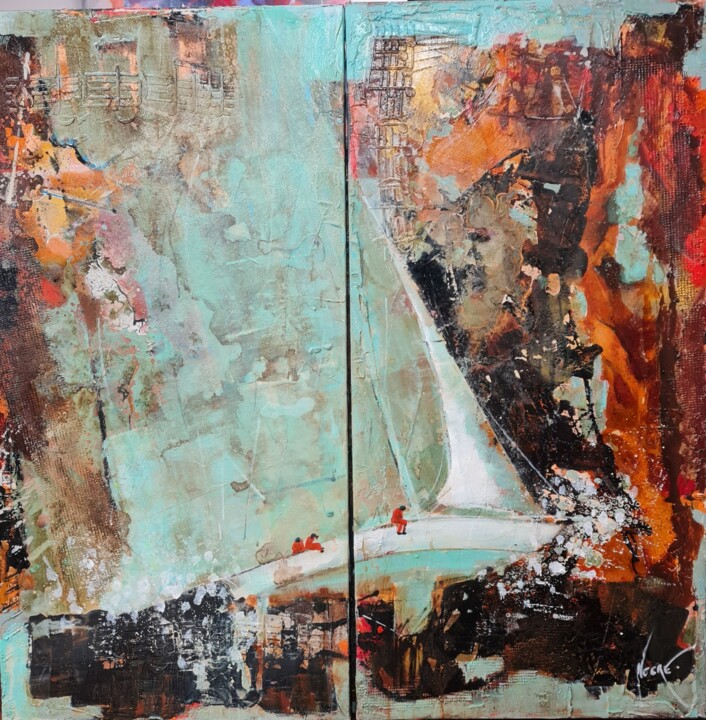
©2023 Virginie Nègre
Notable contemporary artworks
The contemporary art landscape is a dynamic patchwork of diverse expressions and groundbreaking ideas, each artwork a unique dialog with its audience. Here are a selection of some renowned contemporary artworks, spanning various media such as painting, sculpture, photography, drawing, printmaking, textile art, and digital art, that have profoundly influenced this vibrant movement.
"Cloud Gate" by Anish Kapoor, 2006 - This monumental stainless steel sculpture, also known as "The Bean," mirrors and distorts the Chicago skyline and onlookers in its seamless, liquid-like surface, creating an interactive experience that blurs the line between the artwork and the viewer.
"Marilyn Diptych" by Andy Warhol, 1962 - An iconic piece of pop art, this silkscreen painting features fifty images of Marilyn Monroe. Half brightly colored, half in black and white, it reflects the dichotomy of celebrity life and its influence on popular culture.
"Rhein II" by Andreas Gursky, 1999 - This photographic artwork, a digitally-altered image of the Rhine River, is celebrated for its minimalist aesthetic. It strips the landscape to its bare essentials, invoking a sense of tranquility and vastness.
"Black Square" by Kazimir Malevich, 1915 - A revolutionary painting in the realm of abstract art, this piece, featuring nothing more than a black square on a white field, challenges traditional notions of representation, symbolizing a new era in artistic expression.
"Puppy" by Jeff Koons, 1992 - This giant sculpture, a West Highland Terrier blanketed in flowering plants, explores themes of innocence, consumer culture, and the interplay between high art and kitsch. It’s a delightful blend of traditional sculpture and garden craft.
"Re-projection: Hoerengracht" by Ed and Nancy Kienholz, 1983-1988 - A room-sized tableau representing Amsterdam’s red-light district, this work combines elements of sculpture, painting, lighting, and found objects. It engages viewers in a stark commentary on commodification and objectification.
"Untitled" (Your body is a battleground) by Barbara Kruger, 1989 - This photomontage, combining black-and-white photography with impactful text, explores issues of feminism, identity, and power. Its potent, confrontational message is a prime example of the power of text in contemporary visual art.
"For the Love of God" by Damien Hirst, 2007 - This sculpture, a platinum cast of a human skull encrusted with 8,601 diamonds, probes themes of mortality, value, and the human fascination with luxury and decadence. It’s a compelling blend of macabre and magnificence.
"Physical impossibility of Death in the Mind of Someone Living" by Damien Hirst, 1991 - This artwork, featuring a tiger shark preserved in formaldehyde, blurs the line between traditional sculpture and biological specimen. It prompts viewers to contemplate mortality and nature’s ferocity.
"One and Three Chairs" by Joseph Kosuth, 1965 - A piece of conceptual art, it presents a physical chair, a photograph of a chair, and a dictionary definition of a chair, thus exploring the relationship between language, picture, and referent in art.
These pieces, in their diversity, exemplify the rich tapestry of contemporary art, each piece a unique commentary on our world and a testament to the limitless potential of creative expression.
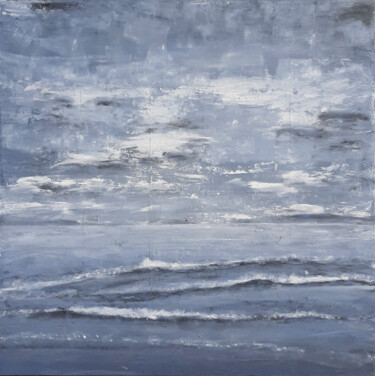
Ana Del Castillo Ibarrola
Pigments on Wood | 39.4x39.4 in

Ana Del Castillo Ibarrola
Pigments on Canvas | 31.5x42.9 in
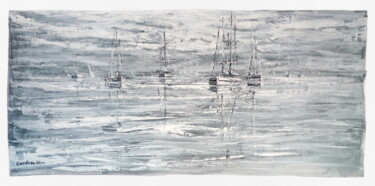
Cardoso Manu
Pigments on Linen Canvas | 19.7x39.4 in
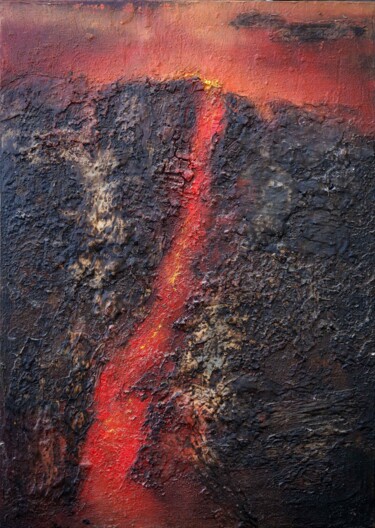
Ivano Pardi
Pigments on Canvas | 27.6x19.7 in
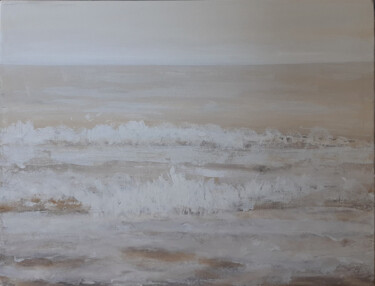
Ana Del Castillo Ibarrola
Pigments on Canvas | 19.7x27.6 in

Olesya Nikolaeva
Pigments on Paper | 5.9x8.3 in
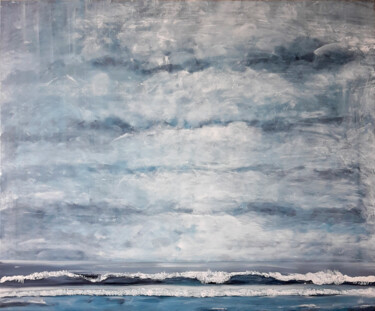
Ana Del Castillo Ibarrola
Pigments on Canvas | 31.9x39.4 in
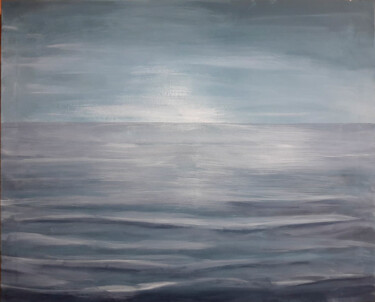
Ana Del Castillo Ibarrola
Pigments on Canvas | 31.5x39.4 in
